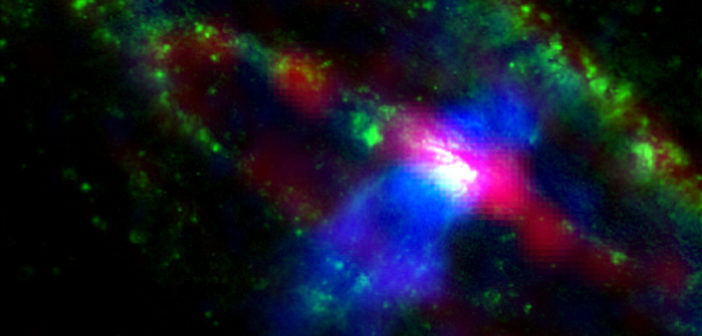The Silver Coin Galaxy, also known as NGC 253, is one of the nearest examples of a starburst galaxy — one that forms new stars faster than typical galaxies. In visible light, the nearly edge-on Silver Coin looks like a bright, narrow ellipse mottled with dark dust clouds. X-ray data tell a different story, though, as the image above shows. While the optical emission (H-alpha; green) is confined to the galaxy’s tilted disk, the X-ray emission (blue) extends perpendicular to the disk, tracing immense outflows powered by the galaxy’s fervent star formation. Millimeter emission (red) rounds out the three-color image. Using images and spectra from the Chandra X-ray Observatory, Sebastian Lopez (The Ohio State University) and collaborators investigated the physical properties of the galaxy’s outflows, finding that the galactic winds expel roughly 6 solar masses of gas each year. Spectral analysis revealed that the innermost region of the outflows are chemically enriched, providing a potential source for the metals found in the sparse gas between the Milky Way and its galactic neighbors. For more details about this windy starburst galaxy, be sure to check out the full article linked below!
Citation
“X-Ray Properties of NGC 253’s Starburst-Driven Outflow,” Sebastian Lopez et al 2023 ApJ 942 108. doi:10.3847/1538-4357/aca65e
